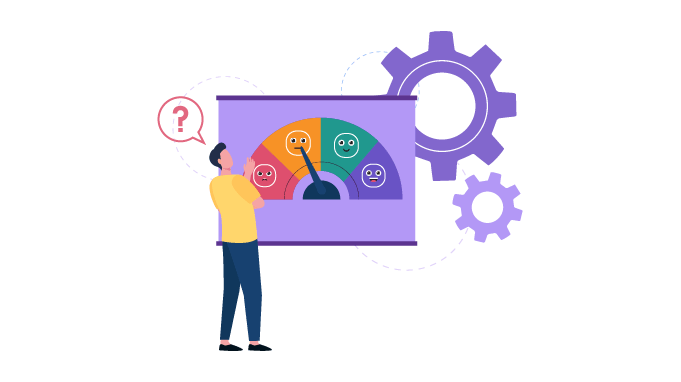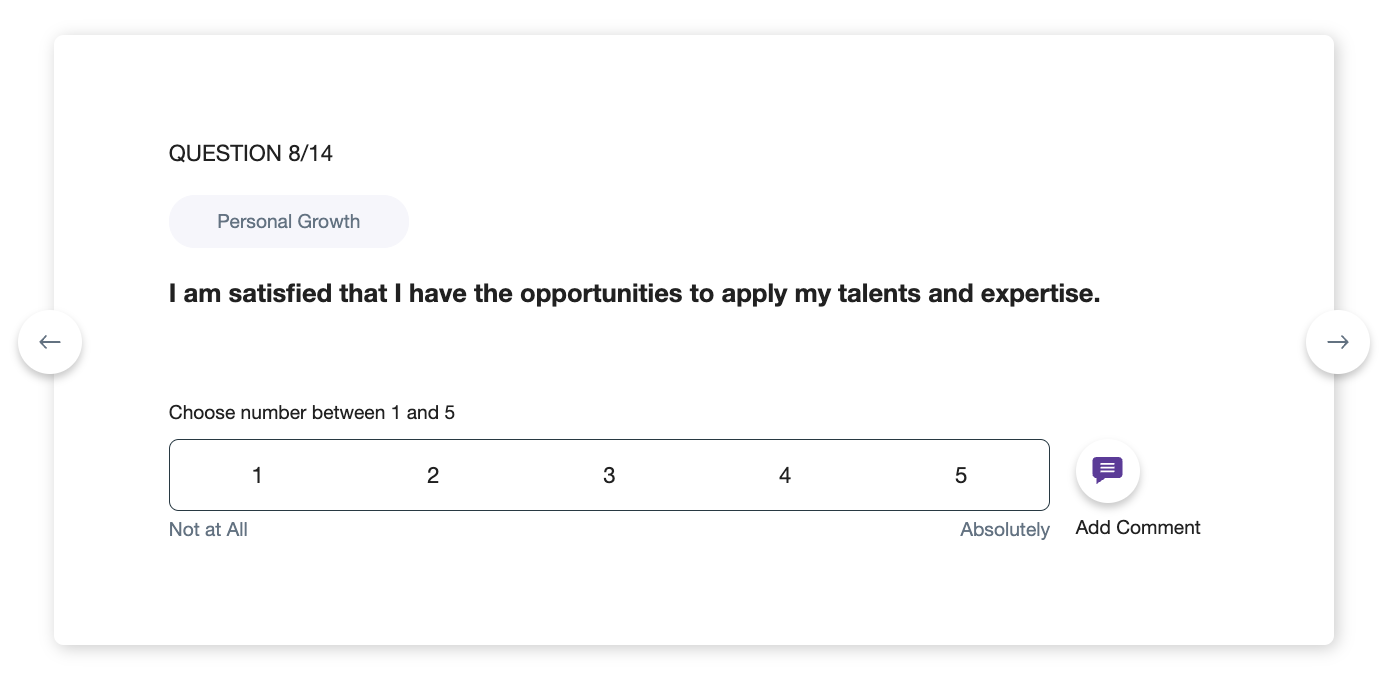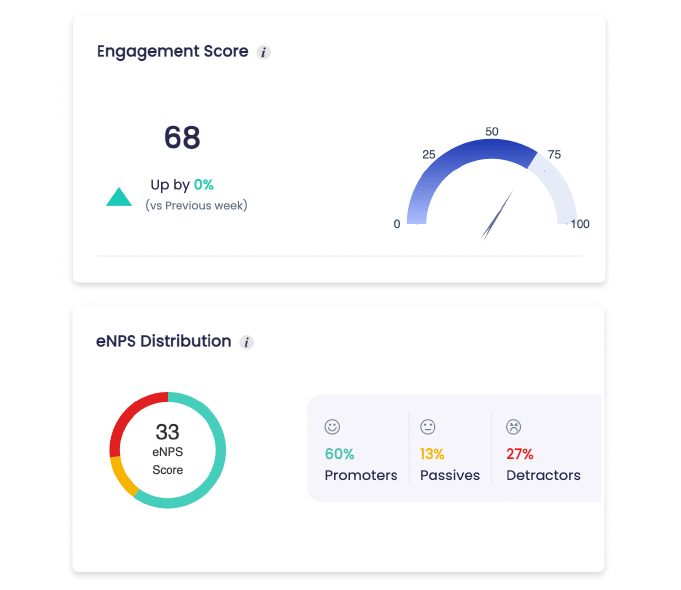9 Best Practices to Keep Employee Satisfaction High
In the ever-evolving landscape of modern workplaces, one factor remains constant: the undeniable link between thriving employee satisfaction and the success of an organization.
As businesses recognize the profound impact of contented employees on productivity, innovation, and overall company performance, pursuing effective strategies to elevate employee satisfaction becomes paramount. In this comprehensive guide, we unveil nine meticulously crafted best practices that transcend industries and organizational sizes.
From fostering a culture of recognition to nurturing professional growth, these practices offer actionable insights to create an environment where employees not only excel but also become the driving force behind the organization's enduring growth and prosperity.
Key Insights
- Concept of Employee Satisfaction
- Key Reasons Behind Employee Dissatisfaction and its Solutions
- Best Practices To Keep Employee Satisfaction High
- Ways To Measure Employee Satisfaction
What is Employee Satisfaction?

Employee satisfaction is the level of happiness or contentment an employee feels for his/her job. Employee satisfaction is an essential aspect of any business or organization.
When employees are happy and satisfied with the management and work culture, they put their best effort to make the company successful.
If the employees in an organization are not happy and content, it directly impacts the bottom line.
When employees’ needs are met they develop a positive outlook towards the organization and its goals. When employees are dissatisfied and unhappy with their jobs, they lose their motivation and tend to underperform.

What Are The Key Reasons For Employee Dissatisfaction

Before proceeding with improving employee satisfaction, it is important to understand the root causes of why employees are becoming dissatisfied in the first place. We have identified and listed the main causes of employee dissatisfaction below -
1. Low Compensation:
One of the fundamental reasons employees feel dissatisfied is low compensation. Getting paid below what they deserve or what industry standards dictate for their role and experience level can be frustrating. HRs should always consider that -
- Stagnant pay that doesn't keep pace with market rates, and
- Failure to adjust compensation for high performers can lead to resentment.
An HR professional must ensure that compensation designed for the employees is fair, competitive, and reflective of the value contributed towards the organization.
Emphasize the organization's non-monetary benefits and perks, such as flexible work arrangements, professional development opportunities, wellness programs, and positive work culture. These factors can contribute to overall job satisfaction.
Implement a robust performance appraisal system that ties compensation to individual contributions. Provide a clear roadmap for how performance improvements can lead to salary advancements.
2. Lack of Career Growth:
In today’s competitive work environment, employees require to develop new skills. Acquiring new skills help them to progress in their career.
Insufficient training and advancement opportunities make them feel stuck in dead-end jobs. So, it is very important for the organization to provide clear paths for career development. An organization should invest in -
- Employee training helps them learn new abilities to take on more responsibility and grow their careers, leading to greater engagement and satisfaction.
- Stretch assignments that help employees with special projects or assignments outside their daily role and stretch their capabilities.
- Mentorship programs that give employees motivation and purpose.
Collectively, these initiatives instill a sense of motivation, purpose, and upward trajectory in employees' careers.
They equip individuals with the skills and confidence to excel in their current roles and position them for future growth and leadership opportunities within the organization.
3. Poor Management:
Disengaged, unsupportive, or incompetent management quickly damages employee satisfaction. Great management and leaders provide guidance, advocate for their team, and help employees improve through feedback and development plans. To tackle issues with poor management, an organization must focus in -
- Management training to provide managers with regular training on leadership skills, communication, performance management, etc.
- Address performance issues that proactively identify and either coach up or let go of disengaged, unproductive employees to improve the work experience for everyone. It demonstrates management's commitment to maintaining high standards.
- Hiring the right leaders with the right competencies and traits to prevent unsatisfactory managers from being promoted or transferred into roles.
By implementing these strategies, organizations can transform poor management into effective leadership. Under proper training, managers are better equipped to guide their teams, address challenges, and promote a healthy work culture. Addressing performance issues fosters accountability and encourages managers to improve continuously.
4. Poor Relations with Co-Workers/Managers:
The quality of workplace relationships significantly impacts employee satisfaction.
There are multiple reasons that create a toxic work environment. Some of these are -
- Unresolved conflict,
- Lack of trust,
- Exclusion,
- Favoritism,
- Bullying
Organizations must focus on building an inclusive culture of mutual understanding and addressing unprofessional behavior in the workplace.
During each of their company-wide meetings, Airbnb employees (known as AirFam) bring up Elephants, Dead Fish, and Vomit.
Elephants are the big things that nobody is talking about. Dead fish are things that happened in the past but still affect the organization. Vomit is things that employees need to share and just want someone to listen to them.
This practice is widely believed to be one of the cornerstones of Airbnb's excellent company culture.
5. Lack of Appreciation and Recognition:
All employees want their good work and extra efforts recognized. Insufficient praise and reward make them feel overlooked and undervalued. To address this issue, companies worldwide are implementing rewards and recognition programs. Implementing regular employee recognition practices creates positive reinforcement and improves employee satisfaction.
6. Poor Work-Life Balance:
Poor work-life balance can significantly diminish employee satisfaction in the following key ways:
- Overwork and burnout lead to mental and physical exhaustion. Chronic stress negatively impacts their health and morale.
- Lack of downtime from work to relax and recharge can make employees feel drained, irritable, and unsatisfied.
- Heavy work demands that cause employees to miss family commitments, social events, etc., frequently make them feel resentful and that their personal priorities are not valued.
- Health consequences due to high stress, insufficient sleep, and no work-life balance also affect employee satisfaction.
The overarching impact is that employees believe the organization does not care about their personal growth, well-being, or priorities outside of work. This severely undermines employee satisfaction as work comes to be viewed as the enemy of a fulfilling life rather than a contributor.
So, let’s have a look at the best practices to improve employee satisfaction in the workplace and eliminate dissatisfaction.
Here are the 9 Best Practices to Keep Employee Satisfaction High
1. A Positive Work Environment

A positive work environment has a significant influence on how the employees feel. The work environment plays a vital role in keeping employees motivated. It significantly influences his/her work life. It reflects in the work they do and helps sustain positivity throughout the day.
A positive work environment doesn’t only mean the organizational structure. It is the overall experience an employee shares with his/her co-workers, immediate supervisors, and company culture.
Create a positive work environment through-
- Open communication
- Building trust
- Building healthy work relationships
- Listening and promoting equal opportunities
Related: 8 Actionable Ways to Improve Workplace Environment
2. Feedback

We all need people who will give us feedback. That’s how we improve. – Bill Gates
We all need and crave feedback, and your employees are no different.
Feedback is critical to employee satisfaction, and most managers are uncertain when it comes to giving feedback. Lack of employee feedback makes the employees unsure about the work and effort they are putting. Human psychology is complicated, and people can receive the same message or dialogue differently
Managers should, therefore, master the tricks of giving feedback. The positive effects of feedback are immense in the workplace. It can build trust and employee satisfaction, motivate employees, and reduce turnover.
The best ways to give healthy feedback are
- The positive intent.
- It should be constructive.
- It should be genuine.
- Don’t wait, give your feedback immediately.
3. Rewards and Recognition

According to OfficeTeam’s study, 66% of employees say they would “likely leave their job if they didn’t feel appreciated.
Each of us has unique skill sets, and we consciously or subconsciously apply those at our jobs. It is, therefore, rewarding for anybody to be appreciated for the application of these skills. When employees are rewarded and recognized for their work, it builds employee morale, productivity, and overall employee satisfaction or job satisfaction.
Organizations often miss out on this psychological aspect. Appreciating and recognizing employees from time to time keeps employees motivated. This energizes them to thrive to do better, and outdo themselves. You can also offer valuable benefits and perks to your employees to boost their morale and job satisfaction.
Related: The Ultimate Guide To Employee Rewards and Recognition
4. Work-life Balance and Employee Satisfaction

Work-life balance helps employees to balance their professional and personal lives. Balancing work-life in today’s world is quite challenging and, many a time, can become burdensome.
Employees keep themselves occupied with the different aspects of their personal and professional lives. And that plays a crucial role in their satisfaction and employee happiness. Long, tight work schedules and too much workload often make it difficult for them to balance them.
Management can, therefore, help its employees to bring a balance in work life. Here are some actionable steps:
- Initiating work-life balance programs
- To have one-to-one interactions
- To provide flexible work hours
- Giving them enough time for relaxation and leisure
Related: 11 Best Ways To Achieve Work-Life Balance
5. Involve and Engage Your Employees

When you involve and engage your employees, it builds employee satisfaction. Teams that work together with involvement are happier and more satisfied. The best way to encourage employees is to make them fully involved. To hear them out in need. To make them realize they are equally important and their contribution and hard work are always appreciated.
Work-life can be hectic and burdensome at times. When you involve and engage your employees deliberately, it reduces employee turnover and enhances employee satisfaction.
Related: Employee Involvement: Why it Matters in Every Organization
6. Develop Employee Skills

Helping employees develop their skill sets is also one of the attributes of employee satisfaction. When you give your employees room to develop their skills, it boosts their job satisfaction and increases work efficiency. This also signifies that you even care about their career development along with your organizational growth.
Evaluating if the employees want to learn something new or need any specific training is always a good practice. The lack of this management approach often makes the employees dissatisfied. Since they feel they have nothing left to learn.
7. Evaluate and Measure Employee Satisfaction

Many small/big organizations conduct biannual or yearly employee engagement surveys. They put up questions on the categories like teamwork, feedback, information, work-life balance, work relationship, self-evaluation, and so on. This is an excellent practice unless it becomes monotonous or complacent. Since work culture is diverse from one organization to another, therefore the surveys can be designed accordingly.
Let’s say management can put an employee suggestion box to hear employees out anonymously. Employees can put any simple suggestions they want to make or write anything that bothers them.
One of the other evaluation practices is one-on-one reviews. This could be very effective in knowing about employee dissatisfaction and its attributes. Management would, this way, see if they are satisfied with their jobs. This would allow the employees to talk about their discontentment, aspirations, and goals. This would foster satisfaction and engagement and what employees expect from the organization.
Related: Ultimate Work-Life Balance Quotes You Must Read Right Now
8. Employee Well-Being

‘Health is wealth’ is an overused phrase, but it holds true to its meaning. Employers who do not emphasize employees’ physical, emotional, psychological, and financial well-being build an inefficient workforce. It is vital to building a work culture for the employees’ well-being needs. Employees who are healthy and stress-free have better productivity and a greater sense of responsibility toward their job. The feeling of security keeps them more engaged and dedicated. Therefore, employers must provide them with corporate wellness programs or sessions and monitor their behavior to foster a positive culture.
9. Clearly Defined Goals and Objectives

You may have best team working for you, but if you do not have goals and objectives in place, you would slowly kill their enthusiasm. Your team needs directions throughout their work-life cycle. When an organization fails to provide clear objectives or company values, it leads to employee dissatisfaction. Employees do not only work for a paycheck. For their satisfaction at work, they also need direction and a sense of purpose that keeps them going. At the end of the day, we all want to do meaningful work and make a difference.
How To Measure Employee Satisfaction?

We discussed the best practices to improve employee satisfaction. But how would you know whether the practices are bearing any fruit? That is why it’s very important to measure the level of satisfaction in your organization.
Some key components that play an important role in measuring employee satisfaction are -
Employee Satisfaction Survey
Employee satisfaction surveys are advanced tools that meticulously analyze the employee experience. The survey includes specialized questionnaires to gather confidential feedback from employees on how content or dissatisfied they are in the workplace.
This type of survey utilizes rating scales, multiple-choice questions, and free response sections to collect data. Click here to learn more about employee satisfaction surveys.
Employee Net Promoter Score (eNPS)
The Employee Net Promoter Score (eNPS) provides a benchmark for assessing how content your employees feel as brand advocates. This metric gauges employee loyalty and satisfaction by asking employees to rate their likelihood of recommending their company as a great workplace.
It involves asking employees a series of questions in the form of a survey. the questions are numbered on a scale instead of a definitive “yes” or “no.” The scale usually ranges from either 1-10 or 1-5, depending on the survey.

Source: Vantage Pulse
Employees select from 1, meaning "not at all likely," to 5, meaning "extremely likely." The percentage of promoters (4-5 rating) minus the percentage of detractors (1-2 rating) yields the overall eNPS score.

Source: Vantage Pulse
Focus Groups
Focus groups bring together small groups of 6-12 employees for moderated discussions. The aim is to gather in-depth qualitative insights into attitudes, concerns, and perspectives on employee satisfaction.
This format allows diving deeper into key issues identified by broader surveys to understand root causes and experiences better. To extract the best results, organizations must ensure confidentiality so participants open up.
Exit Interviews
When an employee departs, an exit interview is often conducted to gather insights into their time at the company. Exit interviews can uncover useful data on why turnover is happening and what dissatisfaction or disengagement issues may exist.
The goal is to identify common themes around where the employee experience is lacking based on first-hand accounts from departing staff. This feedback can be used to introduce retention initiatives in the workplace.
Recommended Resource: The Ultimate Guide On Employee Exit Interviews.
In Summary
Organizations must be aware of these practices to improve employee satisfaction and employee engagement. Satisfied employees would always put their best foot forward and work towards the bottom line when you know what diminishes employee satisfaction and help your employees to give the best employee experience. That’s when you build a team that will help you achieve milestones.
Related: 11 Factors Affecting Job Satisfaction Besides the Obvious


















